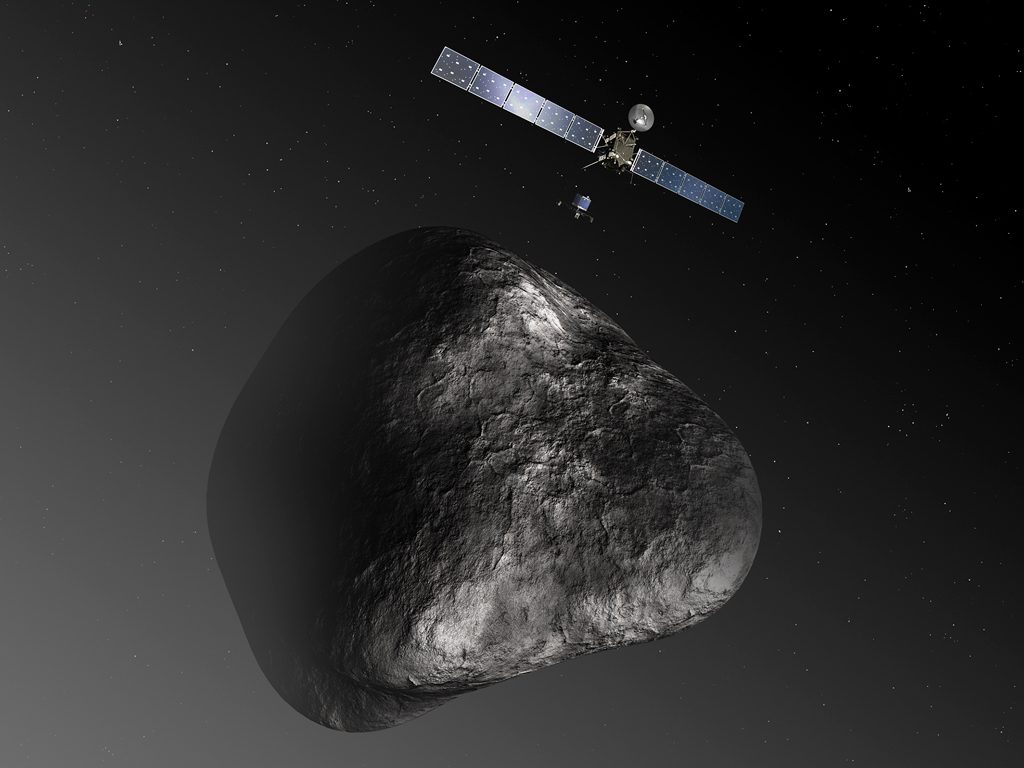SUMMARY
This is AI generated summarization, which may have errors. For context, always refer to the full article.

PARIS, France – Europe’s mission to land the first-ever probe on a comet was on track Wednesday, November 12, with one final “go” pending for the robot lab to eject from its mothership and start a nail-biting seven-hour descent.
Ground controllers in Darmstadt, Germany, gave the Rosetta spacecraft and her precious cargo, lander Philae, the all-clear in the first 3 of 4 crucial systems checks before landing maneuvers will be initiated.
The high-stakes mission should receive its conclusive “go/-no-go” signal about an hour before Philae is scheduled to depart at 0835 GMT on the final, solo leg of an epic, 6.5-billion kilometer (4-billion mile) space journey.
“The Philae Control Team at the Lander Control Centre have completed a final check and verification of the lander’s health. The GO was given at 0235 GMT,” said an entry on the European Space Agency’s Rosetta blog.
“Following a short maneuver set for 0730 (GMT), the final GO for separation will be made around 0735 (GMT),” it added.
The mission’s landing phase passed its first systems check late Tuesday, November 11, to confirm Rosetta was on the correct trajectory.
The second check at midnight GMT confirmed the telecommand instructions for Philae’s separation from Rosetta, and its subsequent landing, had been correctly uploaded.
The third “go/no-go” signal, an hour later than initially scheduled, confirmed Philae was in good health and ready for its 20 km descent to the 900 x 600 meter (3,000 x 2,000 foot) landing site.
Philae is a 100-kilo (220-pound) lander carrying 10 scientific instruments for the first-ever on-site analysis of a comet, which astrophysicists hope will reveal secrets about the origins of the Solar System and maybe even life on Earth.
One of the most complex and ambitious unmanned programs in space history, the 1.3-billion-euro ($1.6-billion) mission was approved in 1993.
Hoisted into space more than ten years later, Rosetta took another decade to reach its target, comet 67P/Churyumov-Gerasimenko, in August this year.
‘Everyone on tenterhooks’
From its orbit, Rosetta has made some astonishing observations including that the comet’s profile somewhat resembles that of a rubber bath duck, with a treacherous, irregular surface – a difficult target to land on.
The big test will be for Philae to settle down safely as Rosetta and 67P zip towards the Sun at a breakneck 18 km per second (11 miles per second), at a distance of 510 million km (320 million miles) from Earth.
“Everyone’s nervous, everyone’s on tenterhooks, but we know the risk is worth taking. The rewards are enormous,” ESA senior science advisor Mark McCaughrean said Tuesday, November 11, of the historic attempt.
“You won’t get anything without taking risks. Exploration is all about going to the limits.”
Philae has no thrusters, which means Rosetta can only eject it when the velocity and trajectory are exactly right.
Any error in its course will widen during descent – the probe could miss its landing site and smash into rocks or cliffs nearby.
Touchdown is expected about 7 hours after Philae separates from Rosetta, with a confirmation signal expected on Earth at about 1600 GMT.
Philae is meant to settle down at a gentle 3.5 km per hour, firing two harpoons into a surface that engineers fervently hope will provide enough grip.
Ice screws at the end of its three gangly legs will then be driven into the low-gravity comet to stop the probe bouncing back into space.
Comets are believed to be balls of primordial ice and carbon dust left over from the building of the Solar System.
Some scientists theorize they may have “seeded” Earth with life-giving carbon molecules and water. – Rappler.com
Add a comment
How does this make you feel?





There are no comments yet. Add your comment to start the conversation.